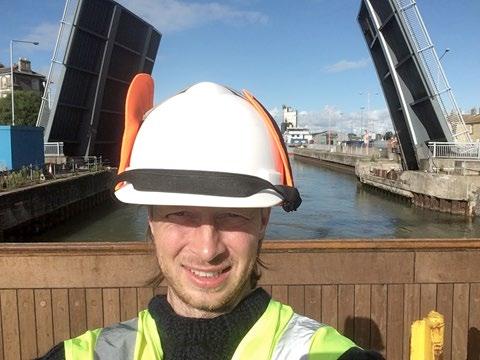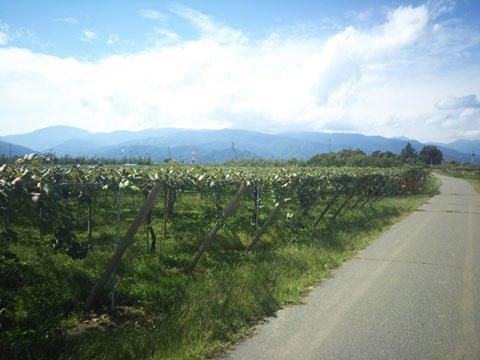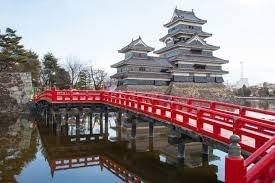
3 minute read
Alumni Bridges
BILL REES (Marine Biology, 1986)
“I’m still living mainly in the Cevennes (France) near to Le Vigan, which has a lovely bridge. Here is a
photo of the bridge and an artist’s impression of it.
Here is an excerpt from my book
Rebel Land: A Portrait of Cevennes:
‘The home is near to Le Vieux Pont, a slender arched bridge built more than eight hundred years ago. A near perfect circle is formed by the arch and its reflection in the river, which
Louis Agricol Montagné beautifully captured
with watercolours in the manner reminiscent of the American Sublime School of painting. S.N.C.F. (national railways) made Montagné’s work into a 1930s poster. Reprints of it are available from the Tourist Office (the former
market hall) at the bargain price of six euros. Stand on the tall bridge, built to withstand spectacular floods. Then look down on the dark silhouettes of
lolling and chubby (as in size, not metaphysical essence) chub. Much to the
frustration of trout anglers, the chub are first to the fly, outcompeted only
when screeching swifts arrive from Africa in May.’
This year I have written a book about playing competitive table tennis, which Parthian Press will be publishing next spring.”
MANUEL NICOLAUS (Marine Biology / Zoology, 2006)
“Greetings from the most eastern point in Britain - mostly sunny Lowestoft!

I have been living here for the last 12 years and work for the Centre of Environment, Fisheries and Aquaculture Science (Cefas). In the picture you see me passing the bascule bridge and leaving Lowestoft
harbour on board the RV Cefas Endeavour.”
ANDY ATHERTON (Applied Marine Geoscience MSc, 2017)

“My bridge is the Buxin Bridge over the narrow straits separating Budai Island from Budai Township, southwest Taiwan.
The current in the straits is tidally influenced and changes direction
dependant on the tidal height and time of day, very much like the tide in the Menai Strait.
I am currently in Taiwan as part of a team of 5/6 passive acoustic monitors (PAM) and noise monitors. We are observing the noise generated by piling operations for the Yunlin windfarm. The windfarm is being constructed on the edge of a reserve which is home to a variety of protected marine mammals including the Chinese white dolphin ( Sousa chinensis ) of which there are only 50 or so remaining.”
MARK FLETCHER (Marine Biology / Oceanography, 2001 & Marine Env Protection MSc, 2002)

“I moved to Matsumoto, Japan 3 months ago from British Columbia with my wife.
“Here is a bridge to nearby Matsumoto castle which we visit regularly.” We are currently picking grapes and apples in this rural area and are looking to buy and restore a traditional rural kominka house and would like to run an AirBnB farm restaurant. We are involved in voluntary community restoration of the rivers and local ricefield irrigation waterways which
are everywhere.
Covid precautions are light here as it is a rural area with low numbers. People wear

masks in public places, but no lockdowns.”

GUS JEANS (MSc in Physical Oceanography, 1994 and PhD Internal Waves and Solitons,1998)
Following an MSc and PhD in Physical Oceanography at the School of Ocean Sciences, I moved on to the metocean industry.

I worked with Fugro for 15 years, gaining key skills and learning that a proven ability to deliver effective solutions to engineering clients is critical. Then 9 years ago I took the plunge and set
up my own consultancy company, Oceanalysis Ltd. Having chosen a PhD topic on internal waves
with clear industry applications, I have since worked on many related projects, establishing one of several niches of expertise. A type of high impact internal wave called a soliton is even at the core of my company logo.
I am the only employee in Oceanalysis, so administration is refreshingly simple and shareholder alignment perfect! But this brings challenges, with enormous fluctuations in workload and
difficulty getting away from it all. But I find these are outweighed by many benefits. Years of
working from home made it easier to adapt to Covid, which has accelerated trends for increased flexibility in the professional workplace. Covid has also accelerated the energy transition. Most










